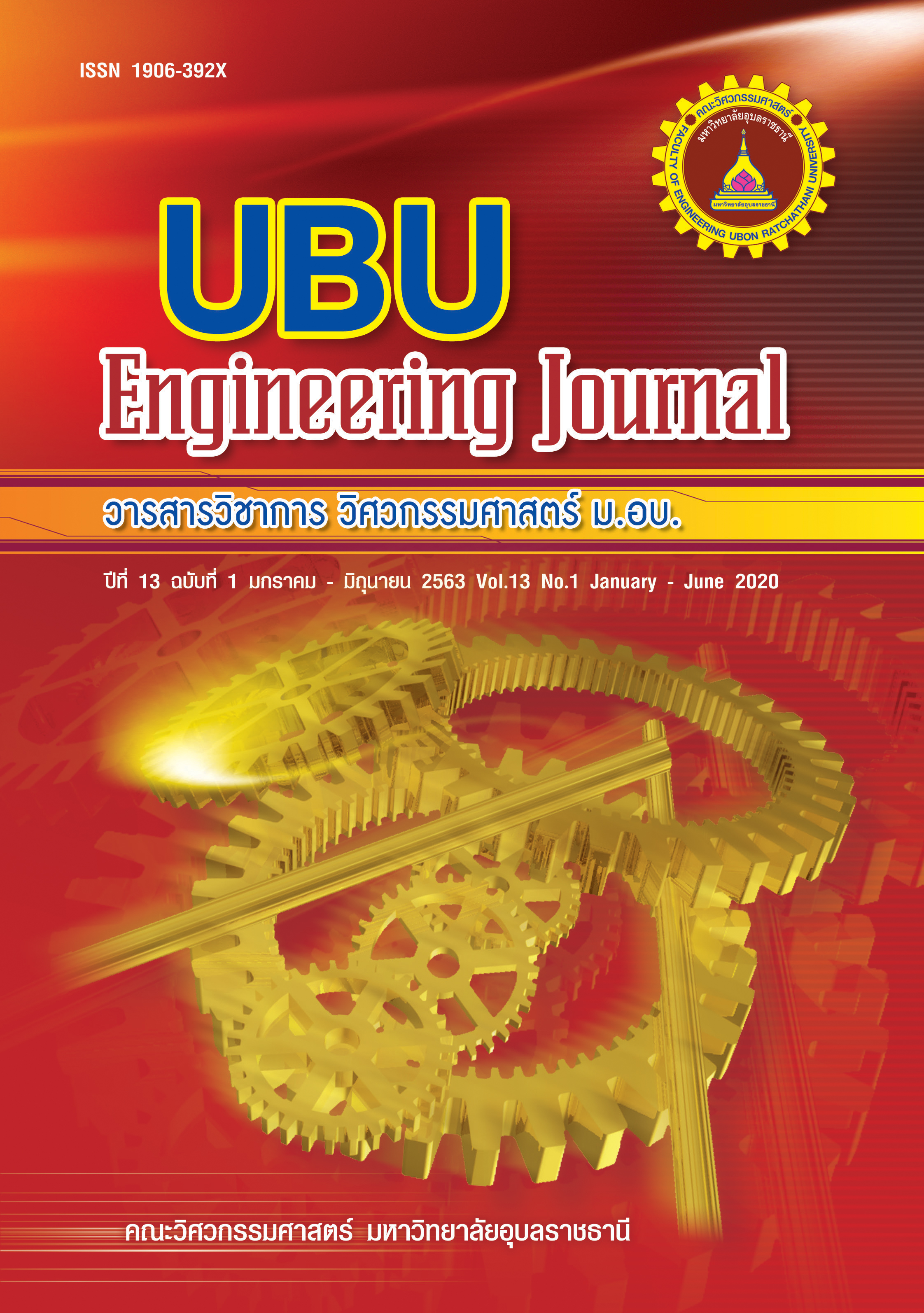แบบจำลองพลวัตระบบควบคุมความร้อนสำหรับเครื่องผลิตเชื้อเพลิงเอทานอลขนาดเล็ก
Main Article Content
Abstract
This paper presents the mathematical model of heat control systems for small fuel ethanol production plants. The system consists of heating coils to heat the fermented water in the distillation process until achieving an ethanol. This prototype was developed and applied in the production of ethanol. In this paper the mathematical model of heat control systems using AC-DC-AC power conversion circuit with a PI control supplied by one-phase power system is presented. The proposed model is derived by using a generalized state-space averaging approach. The model is validated by the simulation via the SimPowerSystemTM of MATLAB program.
Article Details
Section
บทความวิจัย (Research Article)
References
[1] รศ.ดร. อภิชาต บุญทาวัน (2557). การสร้างโรงงานต้นแบบขนาดเล็กเพื่อการผลิตเอทานอลสำหรับใช้เป็นเชื้อเพลิงด้วยเทคนิคผสมระหว่างการแยกไอผ่านเยื่อแผ่นและการดูดซับ.งานวิจัยสาขาเทคโนโลยีชีวภาพ สำนักวิชาเทคโนโลยีการเกษตร มหาวิทยาลัยเทคโนโลยีสุรนารี. : 24-59
[2] อาทิตย์ กองแก้ว (2559). การพัฒนาและจำลองกระบวนการผลิตเชื้อเพลิงเอทานอลและการประยุกต์ใช้ในระบบเอสเทอริฟิเคชั่นของกรดซักซินิกควบคู่กับการแยกไอผ่านเยื่อแผ่น. วิทยานิพนธ์ปริญญาวิทยาศาสตร์ดุษฎีบัณฑิต สาขาวิชาเทคโนโลยีชีวภาพ มหาวิทยาลัยเทคโนโลยีสุรนารี. : 98-115
[3] สุชาวดี จีนสุทธิ์, กองพัน อารีรักษ์, กองพล อารีรักษ์ และอภิชาต บุญทาวัน. แบบจำลองทางคณิตศาสตร์ของระบบควบคุมความร้อนสำหรับเครื่องผลิตเชื้อเพลิงเอทานอลขนาดเล็ก. การประชุมวิชาการทางวิศวกรรมไฟฟ้า ครั้งที่ 41
[4] กองพัน อารีรักษ์ (2558). การสร้างวงจรแปลงผันชนิดบัคก์-บูสต์ที่มีตัวควบคุมแบบเหมาะที่สุด. กลุ่มวิจัยอิเล็กทรอนิกส์กำลัง พลังงาน เครื่องจักรกล และการควบคุม. สาขาวิชาวิศวกรรมไฟฟ้า สำนักวิชาวิศวกรรมศาสตร์ มหาวิทยาลัยเทคโนโลยีสุรนารี.
[5] J. Mahdavi, A. Emaadi, M. D. Bellar and M. Ehsani, “Analysis of power electronic converters
using the generalized state-space averaging approach,” IEEE Transactions on Circuits and
Systems I: Fundamental Theory and Applications, vol. 44, no. 8, 1997, pp. 767-770.
[2] อาทิตย์ กองแก้ว (2559). การพัฒนาและจำลองกระบวนการผลิตเชื้อเพลิงเอทานอลและการประยุกต์ใช้ในระบบเอสเทอริฟิเคชั่นของกรดซักซินิกควบคู่กับการแยกไอผ่านเยื่อแผ่น. วิทยานิพนธ์ปริญญาวิทยาศาสตร์ดุษฎีบัณฑิต สาขาวิชาเทคโนโลยีชีวภาพ มหาวิทยาลัยเทคโนโลยีสุรนารี. : 98-115
[3] สุชาวดี จีนสุทธิ์, กองพัน อารีรักษ์, กองพล อารีรักษ์ และอภิชาต บุญทาวัน. แบบจำลองทางคณิตศาสตร์ของระบบควบคุมความร้อนสำหรับเครื่องผลิตเชื้อเพลิงเอทานอลขนาดเล็ก. การประชุมวิชาการทางวิศวกรรมไฟฟ้า ครั้งที่ 41
[4] กองพัน อารีรักษ์ (2558). การสร้างวงจรแปลงผันชนิดบัคก์-บูสต์ที่มีตัวควบคุมแบบเหมาะที่สุด. กลุ่มวิจัยอิเล็กทรอนิกส์กำลัง พลังงาน เครื่องจักรกล และการควบคุม. สาขาวิชาวิศวกรรมไฟฟ้า สำนักวิชาวิศวกรรมศาสตร์ มหาวิทยาลัยเทคโนโลยีสุรนารี.
[5] J. Mahdavi, A. Emaadi, M. D. Bellar and M. Ehsani, “Analysis of power electronic converters
using the generalized state-space averaging approach,” IEEE Transactions on Circuits and
Systems I: Fundamental Theory and Applications, vol. 44, no. 8, 1997, pp. 767-770.

